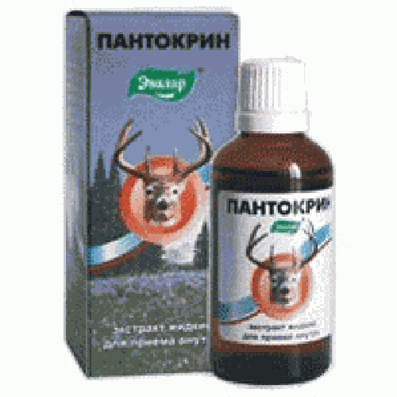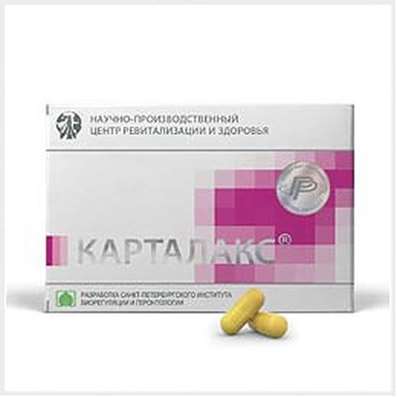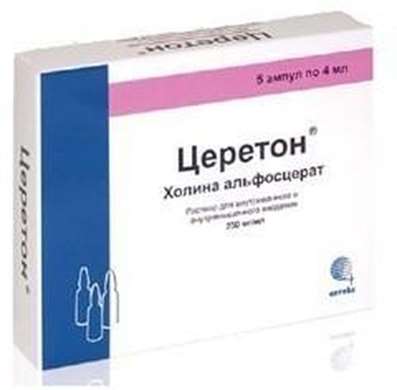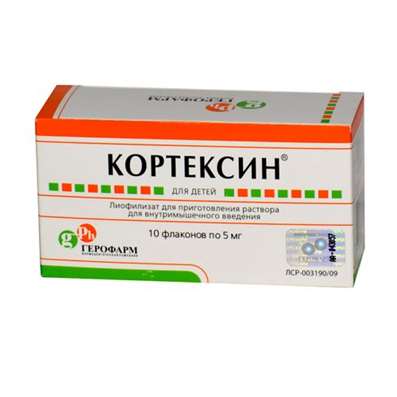Instruction for use: Angiakand
I want this, give me price
Dosage form: tablets
Active substance: Candesartanum
ATX
C09CA06 Candesartan
Pharmacological group
Angiotensin II receptor antagonist [Angiotensin II receptor antagonists (AT1-subtype)]
Nosological classification (ICD-10)
I10 Essential (primary) hypertension: hypertension; Arterial hypertension; Arterial hypertension crisis course; Essential Hypertension; Essential hypertension; Essential hypertension; Essential hypertension; Essential hypertension; Primary hypertension; Arterial hypertension, complications of diabetes; The sudden increase in blood pressure; Hypertensive disorders of blood circulation; hypertensive condition; hypertensive crises; arterial Hypertension; malignant Hypertension; Hypertonic disease; hypertensive crises; accelerated hypertension; malignant hypertension; The aggravation of hypertensive disease; Transient hypertension; Isolated systolic hypertension
I15 Secondary hypertension: Arterial hypertension, complications of diabetes; hypertension; The sudden increase in blood pressure; Hypertensive disorders of blood circulation; hypertensive condition; hypertensive crises; hypertension; arterial Hypertension; malignant Hypertension; hypertensive crises; accelerated hypertension; malignant hypertension; The aggravation of hypertensive disease; Transient hypertension; hypertension; Arterial hypertension; Arterial hypertension crisis course; renovascular hypertension; Hypertension symptomatic; Renal hypertension; Renovascular hypertension; renovascular hypertension; Symptomatic hypertension
I50.0 Congestive heart failure: anasarca heart; Decompensated congestive heart failure; Congestive heart failure; Congestive heart failure with high afterload; Congestive chronic heart failure; Cardiomyopathy with severe chronic heart failure; Compensated chronic heart failure; Swelling with circulatory failure; Edema of cardiac origin; Swelling of the heart; Edematous syndrome in diseases of the heart; Edematous syndrome in congestive heart failure; Edematous syndrome in heart failure; Edematous syndrome in heart failure or liver cirrhosis; right ventricular failure; Congestive Heart Failure; Heart failure stagnant; Heart failure with low cardiac output; Heart failure is a chronic; Cardiac edema; Chronic decompensated heart failure; Chronic Congestive Heart Failure; Chronic heart failure; Change of liver function in heart failure
I50.1 Left ventricular failure: Cardiac asthma; Asymptomatic dysfunction of the left ventricle; Asymptomatic left ventricular heart failure; Diastolic dysfunction of the left ventricle; Left ventricular dysfunction; Changes in the left ventricle with myocardial infarction; Left ventricular heart failure; Violation of the function of the left ventricle; Acute left ventricular failure; Acute cardiac left ventricular failure; Cardiac asthma; Heart failure of left ventricular; Changes in the lungs with left ventricular failure; Precordial abnormal pulsation; Lack of left ventricle
Composition
Tablets -1 table.
active substance: Candesartan cilexetil 8 mg; 16 mg; 32 mg
Auxiliary substances: corn starch pregelatinized starch - 20,3 / 23,8 / 27,5 mg; Croscarmellose sodium (impellosis) - 3,5 / 5/7 mg; Lactose monohydrate (milk sugar) - 64.5 / 90/126 mg; Magnesium stearate - 0.7 (1 / 1.5 mg; Povidone K30 - 3 / 4.2 / 6 mg
Description of dosage form
Tablets are white or almost white, round, biconvex.
Pharmachologic effect
Mode of action - diuretic, hypotensive, vasodilating.
Pharmacodynamics
The selective antagonist of angiotensin II receptor type AT1 forms a strong bond with them, followed by a slow dissociation. Has vasodilating, hypotensive and diuretic action. Does not exhibit the properties of an agonist (does not inhibit ACE and does not lead to accumulation of bradykinin or substance P, does not bind to receptors of other hormones, does not block ion channels involved in the regulation of CVS functions).
As a result of blocking of AT1 receptors of angiotensin II, a compensatory dose-dependent increase in renin activity, angiotensin I concentration, angiotensin II, and a decrease in plasma aldosterone concentration occurs.
Arterial hypertension
The antihypertensive effect is caused by a decrease in OPSS, while there is no effect on heart rate. There were no cases of severe arterial hypotension after taking the first dose of the drug, as well as withdrawal syndrome after discontinuation of therapy. The onset of antihypertensive action after taking the first dose usually develops within 2 hours. Against the background of continuing therapy with the drug at a fixed dose, the maximum reduction in blood pressure is usually achieved within 4 weeks and persists throughout the treatment.
Candesartan increases renal blood flow and does not change or increases the rate of glomerular filtration, whereas vascular resistance in the kidney and filtration fraction are reduced.
Does not affect the concentration of glucose and lipid profile in patients with hypertension and type 2 diabetes mellitus. It provides a dose-dependent smooth decrease in blood pressure.
Age and sex do not affect the effectiveness of the drug.
CHF
In patients with CHF and a lower left ventricular ejection fraction of less than 40%, candesartan administration contributed to a reduction in OPSS and capillary pressure in the lungs, an increase in renin activity and an angiotensin II concentration in the blood plasma, and a decrease in aldosterone concentration.
Pharmacokinetics
Candesartan is a prodrug for oral administration. Rapidly (via ether hydrolysis) is converted into pharmacologically active candesartan.
Absolute bioavailability of candesartan after oral administration of a solution of candesartan cilexetil is about 40%. The relative bioavailability of the tablet preparation as compared to the oral solution is approximately 34%. Thus, the calculated absolute bioavailability of the tablet form is about 14% and does not depend on the time of ingestion. Cmax in the blood serum is achieved after 3-4 hours. The concentration in the blood plasma increases linearly with increasing dose in the therapeutic interval (up to 32 mg). Vd - 0,13 l / kg. Communication with blood plasma proteins - 99,8%.
It is slightly metabolized in the liver (20-30%) with the participation of cytochrome P450 isoenzyme CYP2C9 with the formation of an inactive derivative. The final T1 / 2 is 9 hours. It does not cumulate. The total clearance is 0.37 ml / min / kg, with a kidney clearance of about 0.19 ml / min / kg. It is excreted by the kidneys and with bile mainly in unchanged form, to an insignificant degree in the form of a metabolite: by kidneys (by glomerular filtration and active tubular secretion) - 26% in the form of candesartan and 7% in the form of an inactive metabolite, with bile - 56 and 10% respectively. After a single oral intake within 72 hours, more than 90% of the dose is withdrawn.
In elderly patients (over 65 years of age), Cmax and AUC increase by 50 and 80%, respectively, compared with those of young patients. However, the antihypertensive effect and the incidence of side effects when using the drug do not depend on the age of the patients.
In patients with mild to moderate renal impairment, Cmax and AUC increase by 50% and 70%, respectively, whereas T1 / 2 of the drug does not change as compared to patients with normal renal function.
In patients with severe renal dysfunction, Cmax and AUC increase by 50% and 110%, respectively, and T1 / 2 increases by a factor of 2.
In patients with mild to moderate liver function abnormalities, AUC increased by 23%.
Indications of the drug Angiakand
arterial hypertension;
Chronic heart failure and a violation of left ventricular systolic function (reduction of left ventricular ejection fraction less than 40%) as adjunctive therapy to ACE inhibitors or intolerant ACE inhibitors.
Contraindications
Hypersensitivity to candesartan or other components of the drug;
Deficiency of lactase, lactose intolerance, glucose-galactose malabsorption;
Primary hyperaldosteronism (resistance to therapy);
Severe liver dysfunction and / or cholestasis;
pregnancy;
Lactation period;
Age to 18 years.
With caution: severe renal failure (Cl creatinine less than 30 mL / min); Bilateral stenosis of the renal arteries; Stenosis of the renal artery of a single kidney; After a kidney transplant in the anamnesis; Hemodynamically significant stenosis of the aortic and mitral valve; Cerebrovascular diseases; cardiac ischemia; Hypertrophic obstructive cardiomyopathy; Decrease in BCC; Hyperkalemia.
Application of pregnancy and breastfeeding
In animal studies, kidney damage in the embryonic and neonatal periods was identified with candesartan. It is assumed that the mechanism of damage is due to the pharmacological effect of the drug on RAAS.
In a human embryo, the renal blood supply system, which depends on the development of RAAS, begins to form in the second trimester of pregnancy. Thus, the risk to the fetus increases with the use of candesartan in the II and III trimesters of pregnancy. Drugs that have a direct effect on RAAS can cause fetal developmental disorders or have a negative effect on the newborn, up to a lethal outcome, when used in the II and III trimesters of pregnancy.
Angiakand should not be used during pregnancy. If pregnancy is detected during drug treatment, therapy should be discontinued as soon as possible.
It is not known whether candesartan is excreted in breast milk. In connection with the possible undesirable effect on infants, Angiakand should not be used during breastfeeding.
Side effects
Arterial hypertension, the most common side effects (≥1 / 100, <1/10)
From the side of the central nervous system: dizziness, weakness, headache.
From the osteomuscular system, connective tissue: back pain.
Other: respiratory infections.
Laboratory indicators: reduction of hemoglobin, hypercreatininemia, increased urea concentration in the blood, hyperkalemia, hyponatremia, increased ALT activity.
CHF, the most common side effects (≥1 / 100, <1/10)
From the CVS: a marked decrease in blood pressure.
On the part of the urinary system: a violation of kidney function.
Laboratory changes: hypercreatininaemia, increased urea concentration in the blood, hyperkalemia.
During the post-marketing application of candesartan, the following side effects were reported (frequency <1/10000)
On the part of the hematopoiesis: leukopenia, neutropenia and agranulocytosis.
Laboratory indicators: hyperkalemia, hyponatremia.
From the side of the central nervous system: dizziness, weakness, headache.
From the digestive system: nausea.
From the liver and bile ducts: increased activity of liver transaminases, a violation of liver function or hepatitis.
Allergic reactions: angioedema, skin rash, itching, urticaria.
From the musculoskeletal system, connective tissue: back pain, arthralgia, myalgia.
On the part of the urinary system: a violation of kidney function, including acute renal failure in predisposed patients.
From the respiratory system: cough.
Interaction
In the combined use of candesartan with hydrochlorothiazide, warfarin, digoxin, oral contraceptives (ethinyl estradiol / levonorgestrel), glibenclamide, nifedipine, and enalapril, no clinically relevant interactions have been identified.
With simultaneous use of lithium preparations with ACE inhibitors, a reversible increase in serum lithium concentration and the development of toxic reactions were reported. Adverse reactions can also occur with the use of angiotensin II receptor antagonists, and therefore it is recommended to monitor the level of lithium in the serum when combined with these drugs.
With simultaneous use of angiotensin II receptor antagonists and NSAIDs, including selective COX-2 inhibitors and non-selective NSAIDs (eg acetylsalicylic acid at a dose of more than 3 g / day), the hypotensive effect of candesartan may decrease. As with ACE inhibitors, the simultaneous use of angiotensin II receptor antagonists and NSAIDs increases the risk of reducing renal function until the development of renal failure, leading to hyperkalemia in patients with impaired renal function. This combination should be used with caution, especially in elderly patients. All patients should receive a sufficient amount of fluid. It is necessary to monitor the function of the kidneys at the beginning of therapy and in the future.
Drugs that affect RAAS can increase the concentration of urea and creatinine in the blood in patients with bilateral renal artery stenosis or stenosis of the artery of a single kidney.
Diuretics and other antihypertensives increase the risk of developing arterial hypotension.
Potassium-sparing diuretics, potassium supplements, salt substitutes containing potassium, and other drugs that can increase the serum potassium content (eg heparin) increase the risk of hyperkalemia.
Candesartan is metabolized in the liver to an insignificant extent (isozyme CYP2C9). The conducted studies on the interaction did not reveal the effect of candesartan on the isozymes CYP2C9 and CYP3A4. The effect on other isoenzymes of the cytochrome P450 system has not been studied.
Dosing and Administration
Inside, regardless of food intake, 1 time per day.
Arterial hypertension. The recommended initial and maintenance dose is 8 mg 1 time per day. Patients who require a further reduction in blood pressure, it is recommended to increase the dose to 16 mg once a day. The maximum daily dose of the drug is 32 mg once a day.
The maximum antihypertensive effect occurs 4 weeks after the start of treatment.
In the event that therapy with the drug Angiakand does not lead to a decrease in blood pressure to the optimal target level, it is recommended to add a thiazide diuretic to therapy.
In elderly patients, correction of the initial dose is not required.
In patients with mild or moderate impairment of renal function (Cl creatinine> 30 mL / min), no change in the initial dose of the drug is required.
Patients with severe renal impairment (Cl creatinine <30 mL / min) and patients with mild to moderate liver dysfunction: The recommended initial dose is 4 mg 1 time per day (a candesartan preparation in another release form may be used).
CHF. The recommended initial dose is 4 mg 1 time per day (possibly using candesartan in another release form).
Increasing the dose to 32 mg once a day or up to the maximum tolerated dose is done by doubling it with an interval of at least 2 weeks.
Elderly patients and patients with impaired renal and / or liver function do not need to change the initial dose of the drug.
Angiocand can be used in conjunction with other drugs used in the treatment of CHF, such as ACE inhibitors, beta-adrenoblockers, diuretics and cardiac glycosides.
Overdose
Symptoms: marked decrease in blood pressure, dizziness, tachycardia.
Treatment: symptomatic. Lay the patient on his back, raise the lower limbs above the level of the head, if necessary, increase the BCC by infusing 0.9% sodium chloride solution, appoint sympathomimetics. Hemodialysis is ineffective.
Special instructions
Before and during treatment, it is necessary to monitor blood pressure, kidney function (creatinine in the blood plasma), potassium, and lithium in the blood serum (with combined use of drugs).
Arterial hypotension. Patients with CHF on the background of therapy with the drug Angiakand may develop arterial hypotension. As with the use of other drugs that affect RAAS, the cause of arterial hypotension may be a decrease in BCC, as observed in patients receiving large doses of diuretics. Therefore, at the beginning of therapy should be careful and, if necessary, correct hypovolemia.
Stenosis of the renal artery. In patients with bilateral renal artery stenosis or stenosis of the artery of a single kidney, drugs that affect RAAS, in particular ACE inhibitors, can cause an increase in the concentration of urea and creatinine in the serum. Similar effects can be expected with the appointment of angiotensin II receptor antagonists.
Kidney transplantation. Data on the use of candesartan in patients who have recently undergone a kidney transplant are not available.
Impaired renal function. Against the background of therapy with the drug Angiakand, as with the use of other agents that oppress RAAS, in some patients, renal dysfunction may be noted.
When using the drug Angiakand in patients with arterial hypertension and severe renal failure, it is recommended to periodically monitor the content of potassium and creatinine in the blood serum. Clinical experience with candesartan in patients with severe renal dysfunction or terminal renal failure (Cl creatinine <15 mL / min) is limited.
Patients with CHF should periodically monitor the kidney function, especially in patients aged 75 years and older, as well as with impaired renal function. When increasing the dose of the drug Angiakand is also recommended to monitor the content of potassium and creatinine in the blood plasma.
Joint use with ACE inhibitors in CHF. When using the drug Angiakand in combination with ACE inhibitors, the risk of side effects, especially kidney and hyperkalemia, may increase. In these cases, careful monitoring and monitoring of laboratory indicators is necessary.
General anesthesia and surgery. Patients receiving angiotensin II receptor antagonists may develop arterial hypotension as a result of blockade of RAAS during general anesthesia and during surgical interventions. Very rarely there can be cases of severe arterial hypotension, requiring intravenous fluids and / or vasopressor agents.
Stenosis of the aortic and mitral valve (hypertrophic obstructive cardiomyopathy). Care should be taken when using the preparation Anghiakand, as well as other vasodilators, in patients with hypertrophic obstructive cardiomyopathy or hemodynamically significant stenosis of the aortic and / or mitral valve.
Primary hyperaldosteronism. Patients with primary hyperaldosteronism are usually resistant to therapy with antihypertensive drugs that affect the activity of RAAS. In connection with this, the preparation of Angiakand is not recommended for use in such patients.
Hyperkalemia. Clinical experience with other drugs that affect RAAS shows that simultaneous use of candesartan with potassium-sparing diuretics, potassium preparations or salt substitutes containing potassium, or other drugs that can increase the potassium content in the blood (eg heparin) can lead to the development of hyperkalemia In patients with arterial hypertension.
Are common. Patients in whom vascular tone and renal function predominantly depend on the activity of RAAS (for example, patients with severe CHF or kidney disease, including renal artery stenosis) are particularly sensitive to drugs acting on RAAS. The use of such drugs is accompanied in these patients by acute arterial hypotension, azotemia, oliguria and, more rarely, acute renal failure. The possibility of developing these effects can not be ruled out when angiotensin II receptor antagonists are used. A sharp decrease in blood pressure in patients with ischemic heart disease or cerebrovascular disease of ischemic genesis with the use of any antihypertensive drugs can lead to the development of myocardial infarction or stroke.
Influence on ability to operate vehicles, mechanisms. During the treatment period, dizziness and weakness may occur, therefore, care must be taken when driving vehicles and engaging in other potentially hazardous activities requiring increased attention and speed of psychomotor reactions.
Release form
Tablets, 8 mg, 16 mg and 32 mg. By 7, 10, 20, 28 or 30 tab. In a planar cell box made of PVC film and foil of aluminum printed lacquered.
According to 1, 2, 3, 4, 8 contour cell packs of 7 tables; 1, 2, 3, 4, 5, 6 contour cell packs of 10 tables; 1, 2, 3 contour cell packs of 20 tablets; 1, 2 contour cell packs of 28 tablets; 1, 2 contour cell packs of 30 tablets. Put in a pack of cardboard.
Manufacturer
CJSC "Canonfarma Production"
Conditions of supply of pharmacies
On prescription.
Storage conditions of the drug Angiakand
In a dry, the dark place at a temperature of no higher than 25 ° C.
Keep out of the reach of children.
The shelf life of the drug Angiakand
2 years.
Do not use beyond the expiration date printed on the package.

 Cart
Cart





